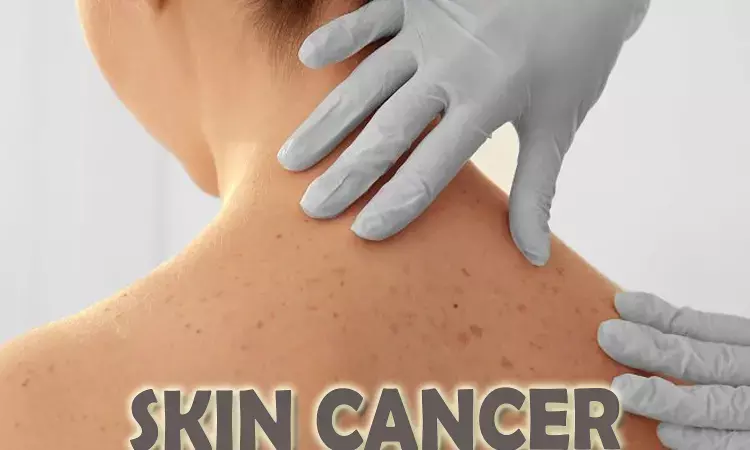- Home
- Medical news & Guidelines
- Anesthesiology
- Cardiology and CTVS
- Critical Care
- Dentistry
- Dermatology
- Diabetes and Endocrinology
- ENT
- Gastroenterology
- Medicine
- Nephrology
- Neurology
- Obstretics-Gynaecology
- Oncology
- Ophthalmology
- Orthopaedics
- Pediatrics-Neonatology
- Psychiatry
- Pulmonology
- Radiology
- Surgery
- Urology
- Laboratory Medicine
- Diet
- Nursing
- Paramedical
- Physiotherapy
- Health news
- Fact Check
- Bone Health Fact Check
- Brain Health Fact Check
- Cancer Related Fact Check
- Child Care Fact Check
- Dental and oral health fact check
- Diabetes and metabolic health fact check
- Diet and Nutrition Fact Check
- Eye and ENT Care Fact Check
- Fitness fact check
- Gut health fact check
- Heart health fact check
- Kidney health fact check
- Medical education fact check
- Men's health fact check
- Respiratory fact check
- Skin and hair care fact check
- Vaccine and Immunization fact check
- Women's health fact check
- AYUSH
- State News
- Andaman and Nicobar Islands
- Andhra Pradesh
- Arunachal Pradesh
- Assam
- Bihar
- Chandigarh
- Chattisgarh
- Dadra and Nagar Haveli
- Daman and Diu
- Delhi
- Goa
- Gujarat
- Haryana
- Himachal Pradesh
- Jammu & Kashmir
- Jharkhand
- Karnataka
- Kerala
- Ladakh
- Lakshadweep
- Madhya Pradesh
- Maharashtra
- Manipur
- Meghalaya
- Mizoram
- Nagaland
- Odisha
- Puducherry
- Punjab
- Rajasthan
- Sikkim
- Tamil Nadu
- Telangana
- Tripura
- Uttar Pradesh
- Uttrakhand
- West Bengal
- Medical Education
- Industry
New portable photodynamic therapy device helps control pain in skin cancer patients

LUGANO - A new prototype photodynamic therapy (PDT) device that can be used at home significantly reduces pain levels during treatment of basal cell carcinoma (BCC), while achieving efficacy comparable with a hospital stay.
These findings come from a breakthrough pilot study, presented today at the 30th EADV Congress.
The efficacy of PDT, a treatment that involves light-sensitive medicine and a light source to destroy abnormal cancer cells, for low-risk BCC has been proven through multiple studies. However, a need to reduce the pain experienced during treatment and the long hospital stay prompted the development of a new device, even before the COVID-19 pandemic. Standard PDT treatment consists of two sessions performed within a hospital environment that usually requires a 1.5-2 hour wait with a one-week interval.
Ana Gabriela Salvio, lead author of the study commented: "The importance of a portable PDT device is crucial in its country of origin, Brazil, where many patients need to travel more than 300km to receive specialised dermatological treatment. However, the global pandemic accelerated the need to develop this at-home treatment element, which has the potential to impact the treatment of BCC internationally."
15 BCC patients took part in the pilot study at Amaral Carvalho Hospital together with Sao Carlos Institute of Physics, in Sao Paulo State, Brazil. The first PDT session was performed at the hospital where a 20% methyl aminolevulinate cream was applied to the BCC lesion, which was then illuminated for 20 minutes with a commercial red light LED device.
Immediately after the first illumination, a light layer of cream was applied and the new portable irradiation device - the size of a coin - was fixed to the skin using medical adhesive tape. The patient was then sent home and advised to turn on the illumination after 1.5 hours and turn it off after 2 hours.
Pain was assessed every 3 minutes during the hospital PDT treatment session and self-reported every 20 minutes during home treatment on a numerical scale from 0 to 10. The median score values were compared between hospital and home treatments.
According to histological analysis, the clearance at 30 days after PDT was 86.67%, which is similar to standard PDT treatment, and the pain score was significantly lower for the PDT treatment performed at home [self-reported by the patients as a 1 for the first three measures and a 0 for the four that followed], as compared to 3-4 for the hospital treatment, suggesting that a more comfortable treatment with less pain is possible.
"Our study results could have a hugely positive impact on the treatment of basal cell carcinoma in Brazil and the rest of the world.", says Ana Gabriela Salvio, "Patients reporting much lower levels of pain from the at-home treatment is really encouraging, especially because it doesn't come at the cost of efficacy."
Following the success of the pilot study, a clinical trial with more than 200 participants has been approved. The new portable irradiation device is also in the process of being patented.
"The fight against skin cancer is an important priority for the EADV," shares Marie-Aleth Richard, EADV Board Member and Professor at the University Hospital of La Timone, Marseille, "The findings of this breakthrough pilot study present a new, exciting way of delivering cancer therapies for home treatment, with the potential to transform how BCC is treated globally. This is of course only possible after confirmation of both BCC diagnosis and PDT treatment indication."
Hina Zahid Joined Medical Dialogue in 2017 with a passion to work as a Reporter. She coordinates with various national and international journals and association and covers all the stories related to Medical guidelines, Medical Journals, rare medical surgeries as well as all the updates in the medical field. Email: editorial@medicaldialogues.in. Contact no. 011-43720751
Dr Kamal Kant Kohli-MBBS, DTCD- a chest specialist with more than 30 years of practice and a flair for writing clinical articles, Dr Kamal Kant Kohli joined Medical Dialogues as a Chief Editor of Medical News. Besides writing articles, as an editor, he proofreads and verifies all the medical content published on Medical Dialogues including those coming from journals, studies,medical conferences,guidelines etc. Email: drkohli@medicaldialogues.in. Contact no. 011-43720751


